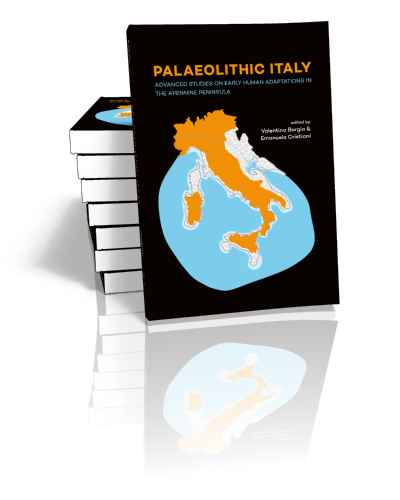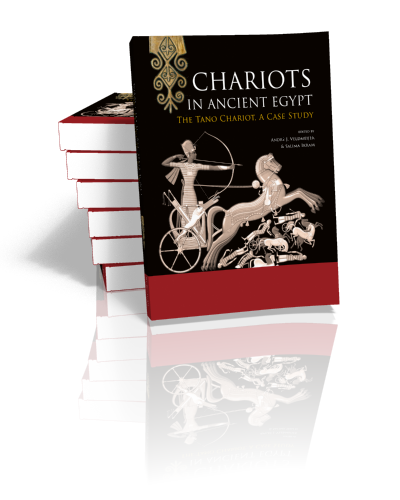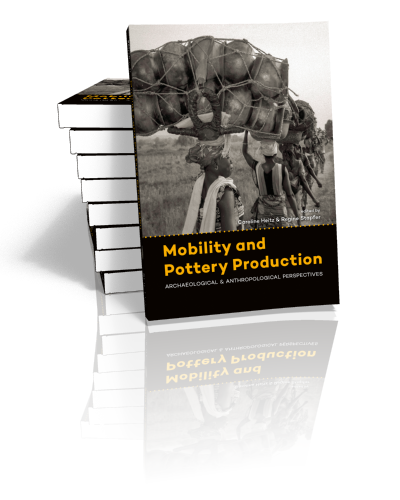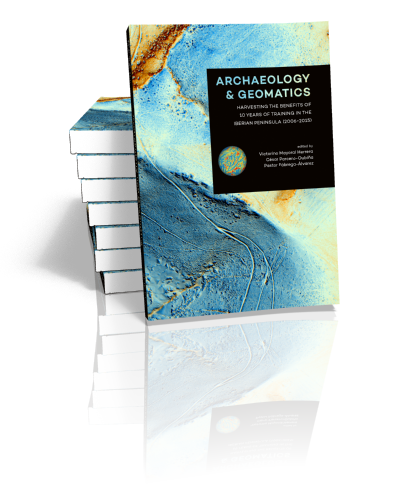Palaeolithic Italy
Advanced studies on early human adaptations in the Apennine peninsula
Edited by Valentina Borgia & Emanuela Cristiani | 2018
The picture of the Palaeolithic adaptations in the Italian Peninsula has always been coarse-grained compared to various well-researched regional hotspots in central and western Europe, as a result of historical research bias preventing the application…
Chariots in Ancient Egypt
The Tano Chariot, A Case Study
Edited by André J. Veldmeijer & Salima Ikram, with contributions by Ole Herslund, Lisa Sabbahy & Lucy Skinner | 2018
Chariots, the racing cars of the ancient world, first appeared in Egypt about 1600 BC, and quickly became not only the preferred mode of transport for royalty and the elite, but also revolutionised military tactics…
Debating Religious Space and Place in the Early Medieval World (c. AD 300-1000)
Edited by Chantal Bielmann and Brittany Thomas | 2018
Religious spaces are often some of the most debated, contested, or otherwise scrutinized in the early medieval world. That space and place were important to people in the past is evident in their architecture, artwork,…
Manipulations post-mortem du corps humain
Implications archéologiques et anthropologiques
Jennifer Kerner | 2018
La mort d’autrui est une épreuve que les communautés humaines ont dû apprendre à surmonter dès les premiers temps de l’Humanité. Ce travail est une exploration des différentes réponses proposées par l’homme face au problème…
The urban graveyard
Archaeological perspectives
Edited by Roos van Oosten, Rachel Schats, Kerry Fast, Nico Arts & Jeroen Bouwmeester | 2018
It is commonly believed that in medieval and post-medieval towns and cities death outnumbered births and that these urban centres could only survive through the influx of migrants; a concept which has come to be…
Mobility and Pottery Production
Archaeological and Anthropological Perspectives
Edited by Caroline Heitz & Regine Stapfer | 2017
For many past and present societies, pottery forms an integral part of material culture and everyday practice. This makes it a promising case example to address human-thing-relations on a more general level, as well as…
Archaeology and Geomatics
Harvesting the benefits of 10 years of training in the Iberian Peninsula (2006-2015)
Edited by Victorino Mayoral Herrera, César Parcero-Oubiña & Pastor Fábrega-Álvarez | 2017
Digital technologies have numerous applications in archaeology ranging from the documentation of the archaeological evidence and the analysis of research data to the presentation of results for a wider audience. This volume consists of various…
Search results for cat-method-theory
:
Palaeolithic Italy
Advanced studies on early human adaptations in the Apennine peninsula
Edited by Valentina Borgia & Emanuela Cristiani | 2018
The picture of the Palaeolithic adaptations in the Italian Peninsula has always been coarse-grained compared to various well-researched regional hotspots in central and western Europe, as a result of historical research bias preventing the application…
Chariots in Ancient Egypt
The Tano Chariot, A Case Study
Edited by André J. Veldmeijer & Salima Ikram, with contributions by Ole Herslund, Lisa Sabbahy & Lucy Skinner | 2018
Chariots, the racing cars of the ancient world, first appeared in Egypt about 1600 BC, and quickly became not only the preferred mode of transport for royalty and the elite, but also revolutionised military tactics…
Debating Religious Space and Place in the Early Medieval World (c. AD 300-1000)
Edited by Chantal Bielmann and Brittany Thomas | 2018
Religious spaces are often some of the most debated, contested, or otherwise scrutinized in the early medieval world. That space and place were important to people in the past is evident in their architecture, artwork,…
Manipulations post-mortem du corps humain
Implications archéologiques et anthropologiques
Jennifer Kerner | 2018
La mort d’autrui est une épreuve que les communautés humaines ont dû apprendre à surmonter dès les premiers temps de l’Humanité. Ce travail est une exploration des différentes réponses proposées par l’homme face au problème…
The urban graveyard
Archaeological perspectives
Edited by Roos van Oosten, Rachel Schats, Kerry Fast, Nico Arts & Jeroen Bouwmeester | 2018
It is commonly believed that in medieval and post-medieval towns and cities death outnumbered births and that these urban centres could only survive through the influx of migrants; a concept which has come to be…
Mobility and Pottery Production
Archaeological and Anthropological Perspectives
Edited by Caroline Heitz & Regine Stapfer | 2017
For many past and present societies, pottery forms an integral part of material culture and everyday practice. This makes it a promising case example to address human-thing-relations on a more general level, as well as…
Archaeology and Geomatics
Harvesting the benefits of 10 years of training in the Iberian Peninsula (2006-2015)
Edited by Victorino Mayoral Herrera, César Parcero-Oubiña & Pastor Fábrega-Álvarez | 2017
Digital technologies have numerous applications in archaeology ranging from the documentation of the archaeological evidence and the analysis of research data to the presentation of results for a wider audience. This volume consists of various…
Browse by subject












